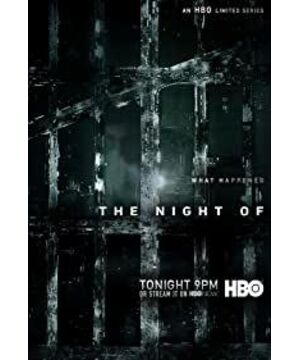The first episode is simply a model for the behavior of the dead boy. I don’t care about my parents’ objection to go to the party. I steal my father’s taxi and go to the party. I don’t know the way and don’t know how to switch the status of the taxi. The idea of party, accept the girl’s ecstasy, accompany the girl home and provoke eyewitnesses for himself, accept the girl’s amphetamine order, and accompany the girl to play the game of cutting hands. . Not to mention a series of brain damage after the sister's body was found. .
Under various hard evidence, the police and prosecutors are convinced that Naz is the murderer in this case. Although the lawyer uncle looked like he was trying to turn the tide, he could not bear the more thought-provoking worries about the ending of the tragedy. He was worried until the last second of the whole drama (even if the prison is out of the way, some fanatics may also be ambushed by some fanatics-- ). .
Although Naz's children's shoes are all the way to death, his luck is too good. Entering this kind of prison where there is no return, you can be so appreciated, loved and cared for by Big Brother Black. Even if someone was violently beaten to the intensive care unit to participate in drug trafficking and drug abuse activities, they were not caught. Brother Hei also sent a CD of the lawyer's misconduct to the lawyer at a critical moment, trying to invalidate the trial (although this request was eventually rejected by the judge, the wonderful closing speech of the lawyer undoubtedly won back Naz). In addition, the question of the female lawyer to Police Officer Box is also an important turning point. As the police officer Box, who discredited the glorious image of detectives in previous American TV dramas, he was hit by various questions in the court and suddenly found out of his conscience to re-examine the case. He found another major suspect and informed the prosecution of the result. Aunt. Although the prosecutor’s aunt was not moved by her career considerations, a seed of hope has been planted. When she tried her best to convince the jury that Naz was guilty when she closed the case, she seemed particularly powerless, as if she couldn't even persuade herself at this time. When the jury declared that it was unable to give a trial result in a 6-6 deadlock, the judge reluctantly asked the prosecution aunt if she wanted to re-select the jury for retrial. The prosecution aunt looked at Naz, the lawyer uncle, and the lawyer sister. With innocent and poor eyes, she finally chose to give this teenager a chance.
I have to say that although the slight delay of the plot may lead to some impulses to abandon the drama, it is still very worthwhile to watch it in full, and I am very grateful to the screenwriter and director for their hard work. I happened to be reading Philip's "Attitude Change and Social Influence" recently. One of the chapters is about the relationship between social influence and the judicial system. Among them, everything from the collection of evidence by the police, to the battlefield of persuasion in court, to the collegiate panel of the jury, is full of social influence. These influences are actually shown in the play, which shows its realism. Police Officer Box’s inducible interrogation of Naz and witnesses; the influence and control of the lawyers of both parties on the witnesses summoned by the two parties in the court tried to make the witnesses who hold strong confessions more credible, and the destruction would be detrimental to them. The image of the witness of the confession; the techniques used in the opening statement and summary of the statement, try to avoid the adverse effects of the first cause effect or the proximate effect on oneself; the mutual persuasion and influence between the jury members in the collegiate panel. Although the final collegiate panel was not visually presented in the play, judging from the time of the ruling and the 6-6 deadlock, such a verdict is considered a small probability event. According to "Attitude Change and Social Impact", the jury often makes a verdict very quickly (less than 2 hours), and the majority often wins in the jury's deliberations. Only when a large minority (5-6 people) agrees with the verdict of not guilty, the majority may be shaken (the draw in this play can be seen as a result of a certain majority member being influenced by the minority result).
In short, whether it is from the perspective of storytelling or realism, this play is worth watching.
View more about The Night Of reviews











